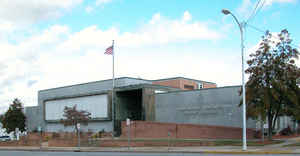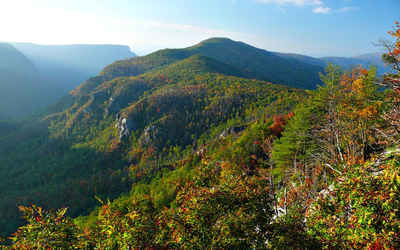North Carolina Counties
North Carolina is divided into one hundred counties. The establishment of North Carolina counties stretches over 240 years, beginning in 1668 with the creation of Albemarle County and ending with the 1911 creation of Avery and Hoke counties. Five counties have been divided or abolished altogether, the last being Dobbs County in 1791.Davidson County, North Carolina
Davidson County Education, Geography, and History
Davidson County is a county located in the state of North Carolina. Based on the 2010 census, the population was 162,878. Its county seat
is Lexington, and its largest city is Thomasville.
Davidson County is included in the Winston-Salem, NC Metropolitan Statistical Area, which is also included in the
Greensboro-Winston-Salem-High Point, NC Combined Statistical Area.
Etymology - Origin of Davidson County Name
It was named in honor of General William Lee Davidson, a gallant soldier of the Revolution, who was killed at Cowan's Ford.
Demographics:
County QuickFacts: CensusBureau Quick Facts
Davidson County History
Davidson was formed in 1822 from Rowan. It was named in honor of General William Lee Davidson, a gallant soldier of the Revolution, who was killed at Cowan's Ford. When General Greene retreated across North Carolina before Cornwallis in 1781, he stationed troops under Davidson at Cowan's Ford on the Catawba River to delay the British army. The British attacked the Americans, killing General Davidson, and forced a passage. The United States government has erected a monument in his honor on Guilford Battle Ground. The county is in the central section of the State and is bounded by Randolph, Montgomery, Rowan, Davie, Forsyth, and Guilford counties. The present land area is 552.15 square miles and the 2000 population was 147,246. Lexington is the county seat.
Geography: Land and Water
As reported by the Census Bureau, the county has a total area of 567 square miles (1,470 km2), of which 553 square miles (1,430 km2) is
land and 14 square miles (36 km2) (2.5%) is water.
Davidson County is located entirely within the Piedmont region of central North Carolina. The Piedmont consists of gently rolling terrain
frequently broken by hills or shallow valleys formed by rivers and streams. An exception to this terrain are the Uwharrie Mountains in the
county's western and southwestern sections. The Uwharries are the oldest mountain range in North America,[citation needed] and at one time
they rose to nearly 20,000 feet (6,100 m) above sea level. However, time has worn them down to little more than high hills; yet due to the
relative flatness of the surrounding countryside they still rise from 250 to 500 feet (150 m) above their base. The highest point in the
Uwharries - and the highest point in Davidson County - is High Rock Mountain in the county's southwestern corner. It has an elevation of 1,119
feet (341 m) above sea level.
Neighboring Counties
Bordering counties are as follows:
- Davie County - northwest
- Forsyth County - north
- Guilford County - northeast
- Montgomery County - south
- Randolph County - east
- Rowan County - southwest
- Stanly County - southwest
Education
Davidson County is served by Davidson County Schools; however, the cities of Thomasville and Lexington have their own school districts.
Davidson County Schools is one of the county's largest employers.
Davidson County is also served by Davidson County Community College, a comprehensive community college that is a member school of the North
Carolina Community College System. Davidson County Community College was chartered in 1958 as an Industrial Education Center designed to
provide adults with the education and skills needed to move from an agricultural to a manufacturing-based economy.
In 1965, the institution was chartered as Davidson County Community College. The Associate in Arts and Associate in Science degrees were added
to the existing Associate in Applied Science degree, Diploma, and Certificate programs. University transfer courses were added in 1966. In
1997, the College participated in the Comprehensive Articulation Agreement (CAA) that allows college transfer students to move easily to the
16 UNC schools, as well as many independent college and universities.







